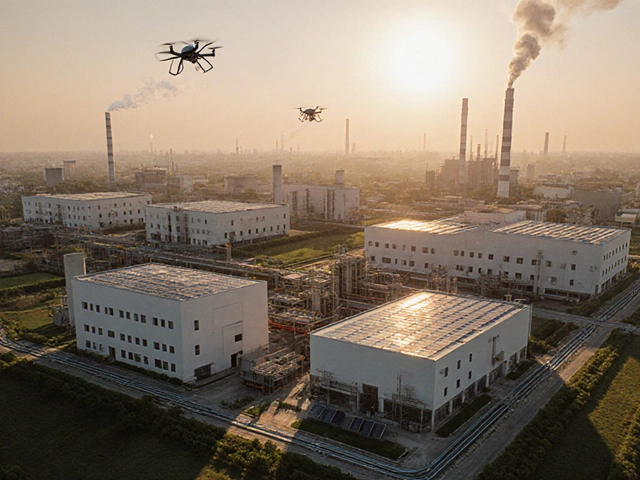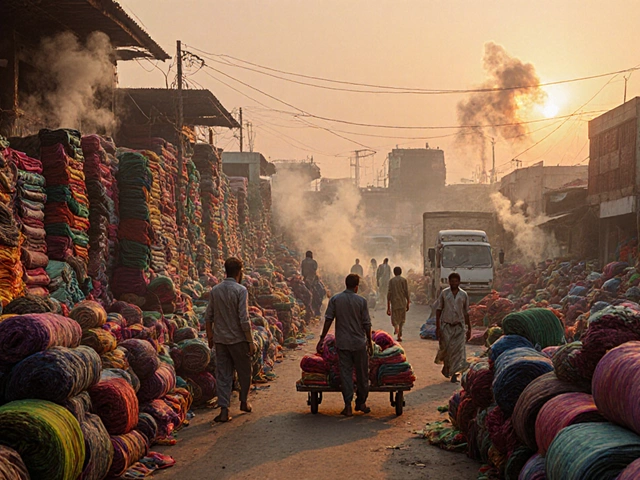Top Producers: Who’s Winning in Manufacturing Today?
When you hear "top producers" you probably think of big factories, huge export numbers, and brands that everybody knows. In reality, a top producer is any company that consistently outsources, scales, and sells more than most of its peers. Whether it’s a pharma giant churning out life‑saving drugs or a furniture maker filling homes across India, the common thread is the ability to keep quality high while volume climbs.
Why Some Companies Become Top Producers
First off, location matters. The pharma posts on our site show that Baddi, Hyderabad, and Gujarat each dominate a piece of the puzzle – Baddi for capacity, Hyderabad for R&D, Gujarat for exports. That geographic edge gives them better supply chains and lower logistics costs. Second, technology is a game‑changer. Companies that invest in automation, data‑driven quality control, or modern material science (think synthetic textiles or advanced food processing units) can push out more units with less waste.
Third, leadership and focus keep the engine running. The "Three Pillars of Manufacturing" article breaks it down to production, quality, and efficiency. Firms that treat these pillars as a connected system avoid bottlenecks and can react fast to market swings. Finally, market demand drives volume. Posts about the "Highest Demand Product Ideas for Manufacturing Startups" and "Most In‑Demand Products in 2025" prove that knowing what customers want – from eco‑friendly furniture to high‑ROI flip items – lets a company stay ahead of competitors.
Hot Sectors to Watch in 2025
The furniture manufacturing boom in India is a perfect example. With rising real‑estate projects and a push for sustainable designs, local makers are scaling fast. Similarly, synthetic textile producers are climbing the ranks; the article on "Largest Synthetic Textile Manufacturer in India" highlights a clear leader setting industry standards.
Pharma remains a heavyweight. The "Richest Pharmacist in the World" story shows how Indian tycoons have turned drug production into global powerhouses. Meanwhile, small‑scale industries – from food processing units to niche textile businesses – are finding untapped niches because competition is still low in many sub‑segments.
Electronics is another arena where price differentials matter. The "Cheaper Electronics Brands in Europe vs India" post reveals that savvy manufacturers can source components where they’re cheapest, then assemble locally to cut costs and stay competitive.
So, how do you use this info? Start by mapping the sectors you care about – pharma, furniture, textiles, food, or electronics. Look at the top producers in each and study their supply chain choices, tech adoption, and product focus. If you’re launching a startup, aim for a high‑demand product and build around the three pillars of manufacturing. Keep an eye on emerging hubs like Baddi or Hyderabad for inspiration or partnership opportunities.
Bottom line: top producers aren’t just big; they’re smart, adaptable, and deeply tuned to what the market needs right now. Use the insights from our tag page to spot trends, learn proven strategies, and position your own operation on the path to becoming a top producer yourself.
Plastic Manufacturing Giants: Who Makes Most of the World's Plastic?
If you've ever wondered which companies are responsible for mountains of plastic around us, you're not alone. This article breaks down which corporations are at the heart of the global plastic production machine, and why it matters. From household names to industry giants, discover who’s filling the world with plastic—and what it means for our planet. You'll also pick up handy insights on spotting products from these companies in your daily life. Understanding this could actually help you make smarter consumer choices.
Read More




